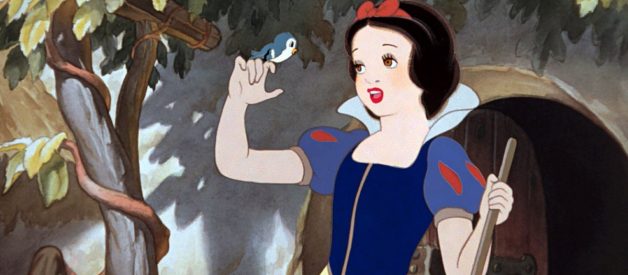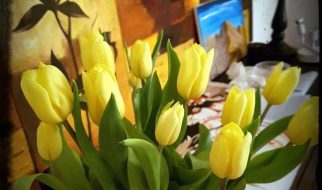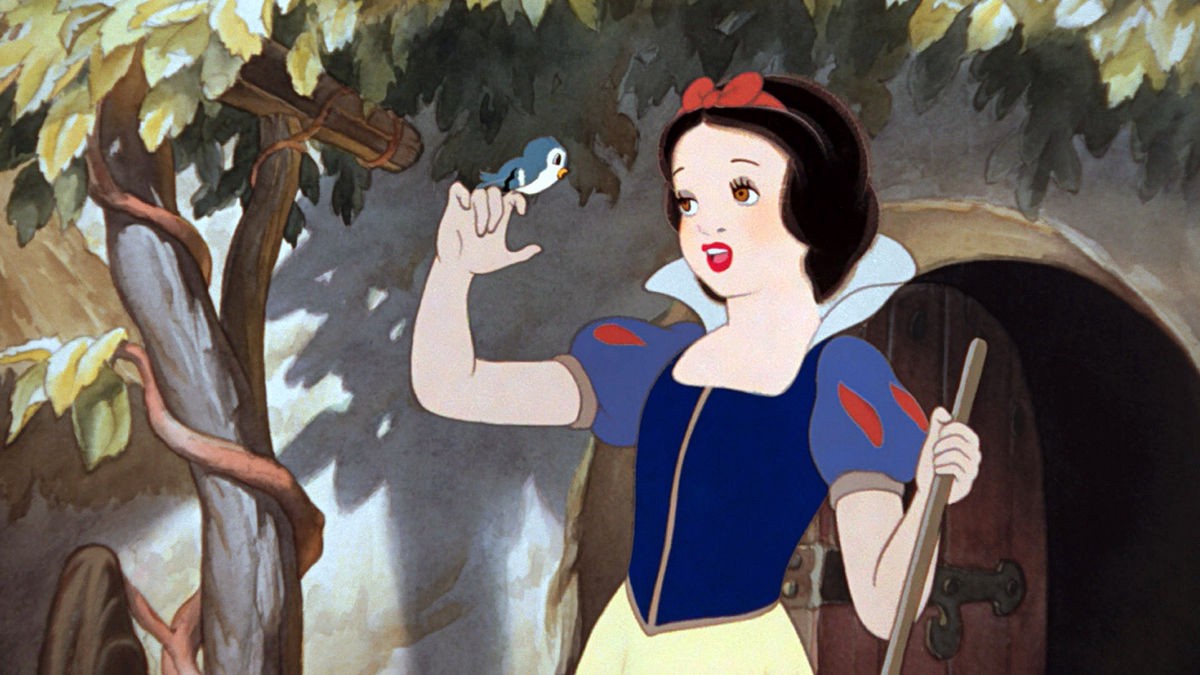 Snow White does chores (Source: reproduction)
Snow White does chores (Source: reproduction)
Eighty years ago, the groundbreaking animated feature ?Snow White and the Seven Dwarfs? was released, astonishing the world and proving wrong the naysayers who thought an animation couldn?t last longer than one hour.
Snow White is no feminist role model. She is only 14, nave, kind, industrious and lives for the day her prince will come. When he finally does, as a good damsel, she becomes shy and hides. And then she escapes death, cleans the house of seven dwarves who work in a mine and accepts food from a stranger ? and the food ends up being poisonous.
In a Disney princess ranking of girl power, Snow White wouldn?t be very high ? the top would probably be occupied by Merida or Mulan. But we?re not here to talk about Snow White, the princes, but ?Snow White and the Seven Dwarfs?, the movie ? and the women behind it.
 The beginning of a groundbreaking movie (Source: reproduction)
The beginning of a groundbreaking movie (Source: reproduction)
The color girls at Disney?s studio
Cel animation is a woman?s work ? at least in the backstage. Most of the animators credited in the opening credits of ?Snow White and the seven Dwarfs? are men, but most inkers and painters were women.
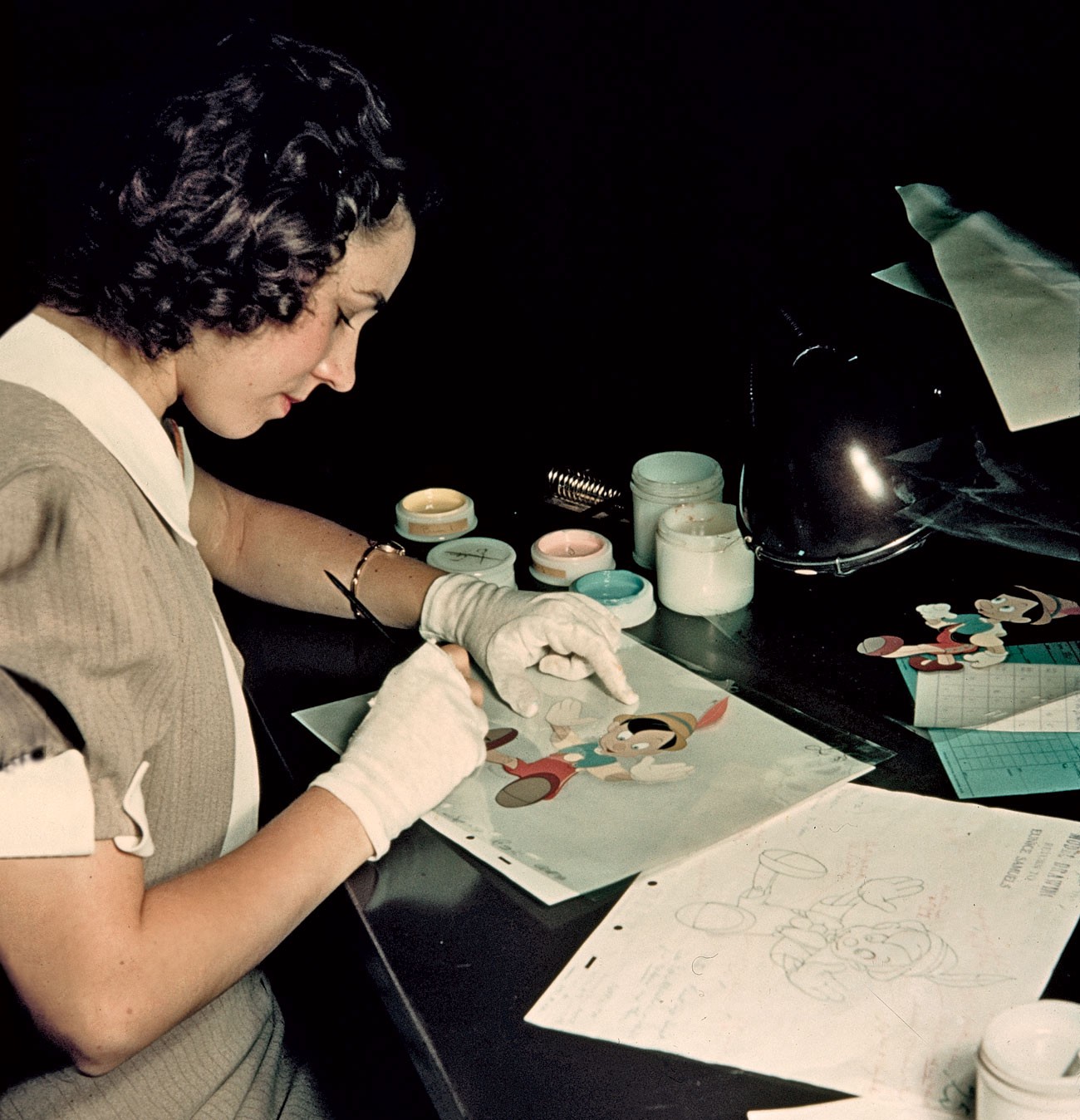 A painter working in a cel for ?Pinocchio? (Source: Vanity Fair)
A painter working in a cel for ?Pinocchio? (Source: Vanity Fair)
An inker is someone whose job is to fill in the animated cels, one by one. A painter will later paint the cels with pre-determined colors. A cel is a celluloid sheet that was the usual feedstock for animated productions in the 1930s and 1940s. After each cel was drawn on, filled, painted and photographed, the material could start being edited.
Hundreds of women were employed in the Ink and Paint department, working from the early hours of the morning until late at night. The lunch break was short, many girls fell asleep anywhere they could and the pressure was huge. It was a rough, tiresome and meticulous job. The cels were fragile, the colors were many, and perfection was demanded from all of the young inkers and painters.
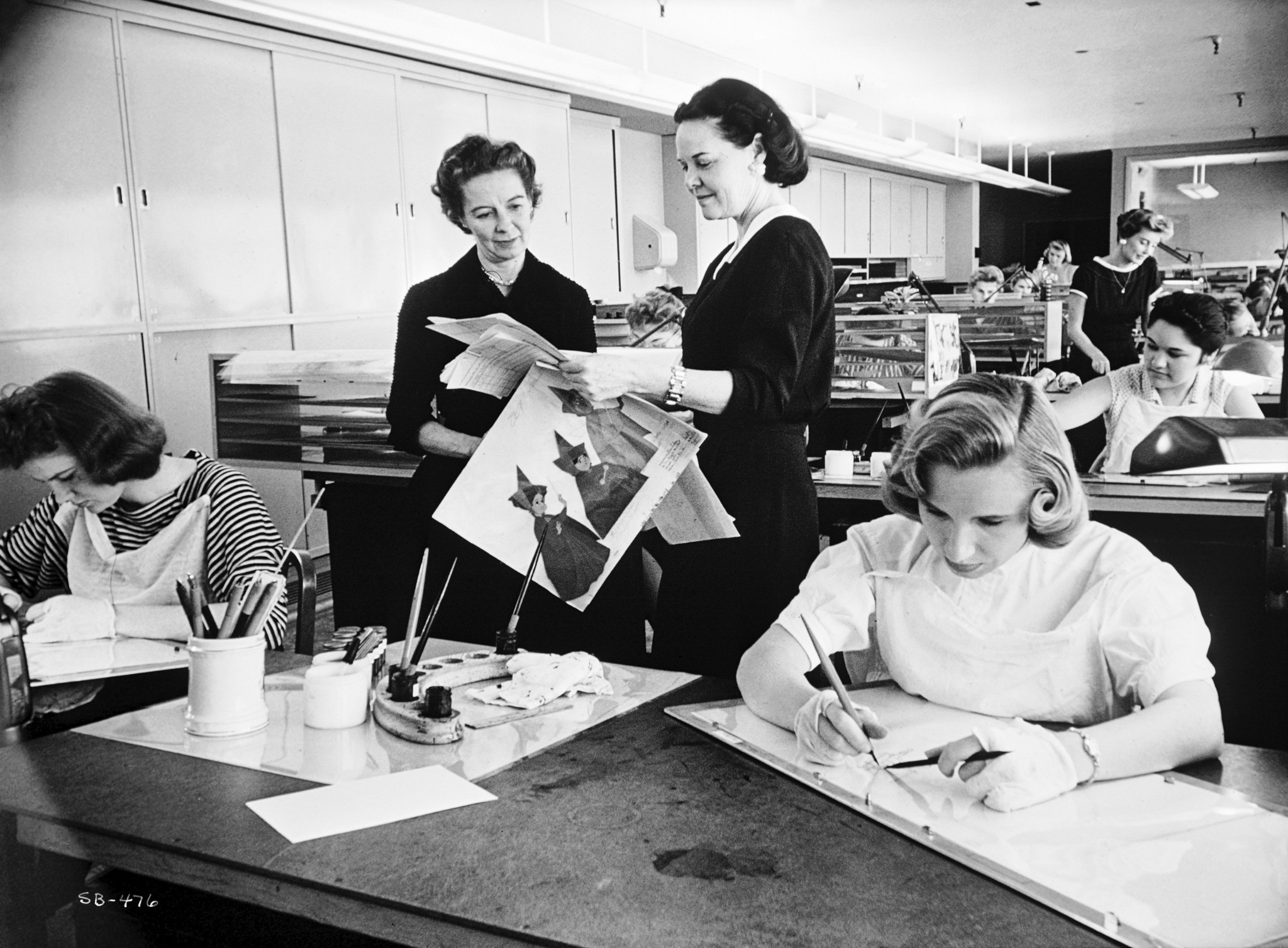 Inkers and painters in the 1950s (Source: reproduction)
Inkers and painters in the 1950s (Source: reproduction)
If you are one of those people who pay a lot of attention to the colors in a movie ? and I am myself one of those people ? your eyes will be delighted by the hard work of these girls while watching ?Snow White and the Seven Dwarfs?. We can?t deny that the movie would have a very different effect in the audience if it was in black and white. These were the women who developed in part the film?s look ? including Snow White?s rose cheeks, whose tone was accomplished by adding a wee bit of cosmetic rouge in every cel.
The Disney studios were proud to say that they were the only studios in Hollywood where the main attraction were the artists working behind the screen, not the stars. In the film ?The Reluctant Dragon? (1941), during the studio tour, we see the development of new paint colors, and catch a glimpse of the girls from Ink & Paint ? the unsung heroines from Disney?s Golden Age.
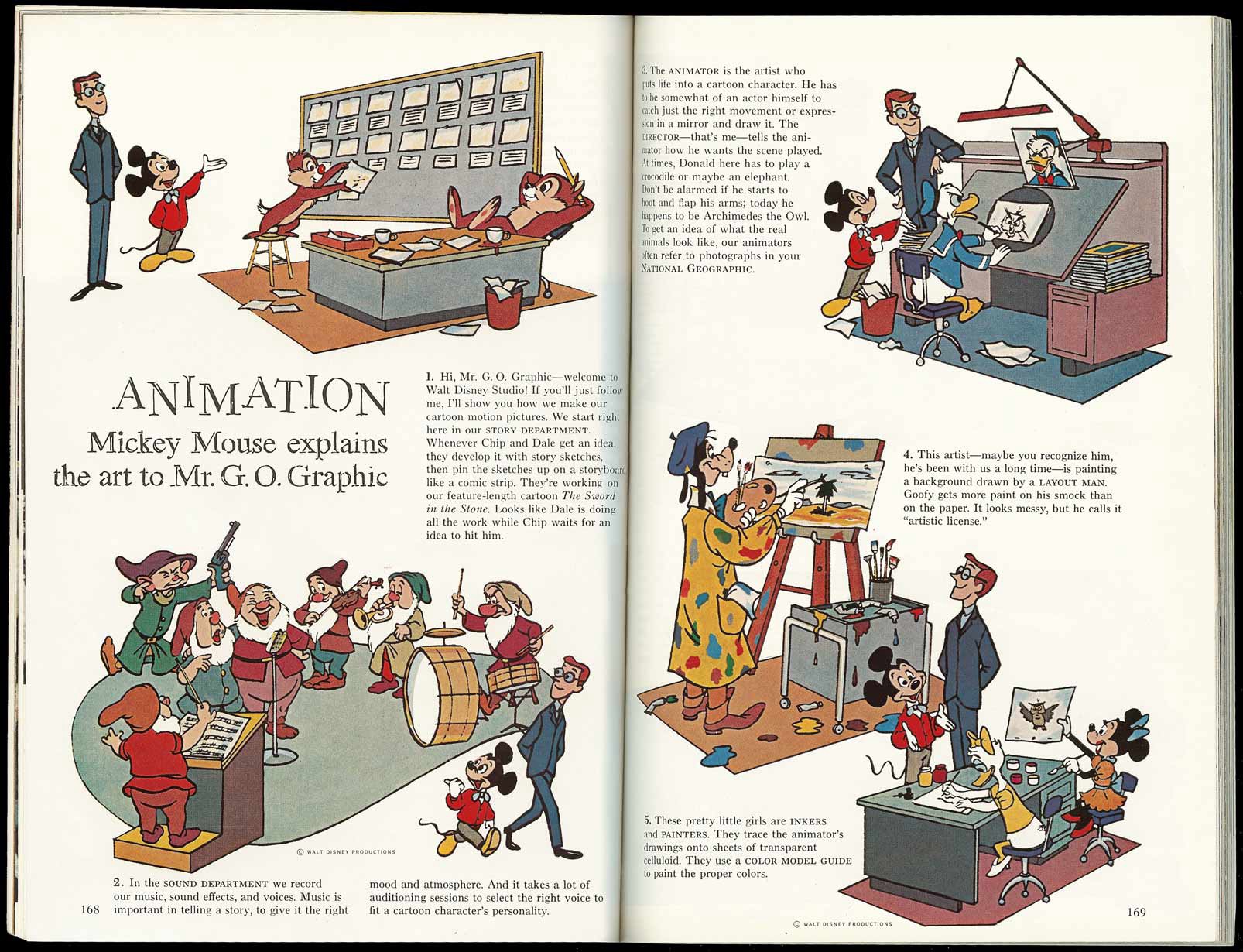 This magazine article from 1963 presents the several stages of animation. Minnie and Daisy are the inkers and painters (Source: National Geographic, 1963)
This magazine article from 1963 presents the several stages of animation. Minnie and Daisy are the inkers and painters (Source: National Geographic, 1963)
The inspirations for Snow White ? Hedy Lamarr, Marge Champion and Adriana Caselotti
One of the biggest challenges in making the movie was animating the human characters in a way that didn?t look artificial. That?s why the Prince is barely seen in the film ? all efforts were put in animating Snow White. And with the search for naturalness in mind, Disney started the tradition of having actors perform the scenes for animators to get inspired. In the end, Snow White?s looks were a mix of three girls.
Hedy Lamarr was an Austrian actress who became known for a scandalous full-frontal nude in the movie ?Ecstasy?, made when she was only 19. Hedy would later hold the patent for the technology that enables Wi-Fi and GPS to work.
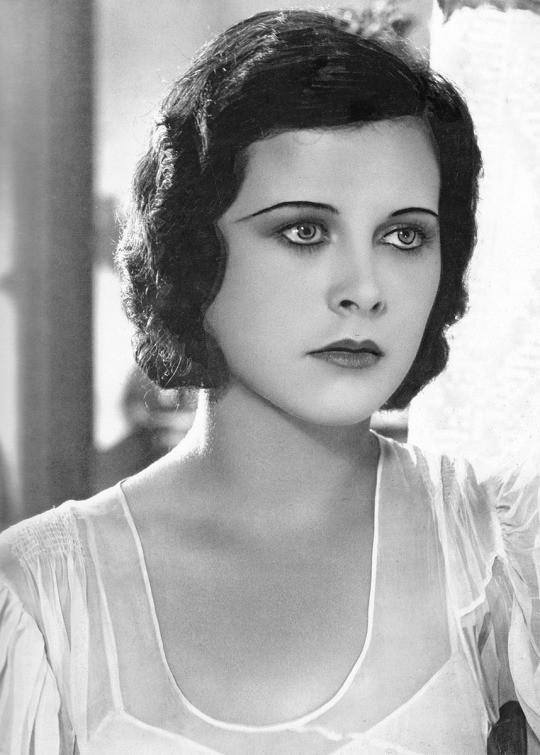 Hedy Lamarr in 1933 (Source: reproduction)
Hedy Lamarr in 1933 (Source: reproduction)
The live-action model for Snow white was Marge Champion, a famous dancer who later also worked as a ?performance model? in ?Pinocchio? and ?Fantasia?, and who is still alive as of this writing. She posed for the character, but the physical appearance of the voice actress also influenced the animators.
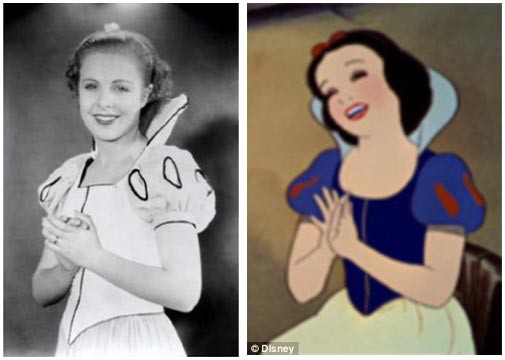 Marge Champion poses as Snow White (Source: reproduction)
Marge Champion poses as Snow White (Source: reproduction)
Snow White was dubbed by Adriana Caselotti, who was 18 when the recordings started and 21 when the film was released. Adriana had a big setback after recording her voice work: she found out her contract forbade her from working anywhere else. No other movie, no radio, nothing. Snow White?s voice had to be exclusive. She went on tours dressed as Snow White to promote the film, but other than that she received no screen credit and had a potential career erased by an abusive work contract.
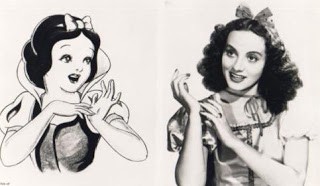 Adriana Caselotti (Source: reproduction)
Adriana Caselotti (Source: reproduction)
The inspirations for the Evil Queen ? Joan Crawford and Lucille LaVerne
Snow White should be the fairest one of all, but the Evil Queen ? whose name is Grimhilde, by the way ? shouldn?t be a distant second. In order to create the animated personification of evil beauty, the animators drew inspiration from some of the most famous screen sirens of the 1930s.
The Queen has the allure of a vamp and the facial features of Joan Crawford. It was observed that the Queen?s gown resembles the outfit used by Helen Gahagan in the 1935 film ?She?.
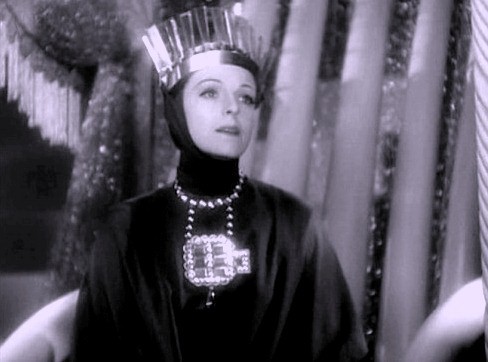 Helen Gahagan in ?She? (Source: reproduction)
Helen Gahagan in ?She? (Source: reproduction)
Joan Crawford started her career in the movies in the mid-1920s, and her flapper style was the one that influenced the animators the most when drawing the queen. With the arrival of talkies, Joan got bigger roles and established herself as one of the most popular actresses for more than 20 years.
 Comparison of the Queen?s and Joan Crawford?s faces (Source: reproduction)
Comparison of the Queen?s and Joan Crawford?s faces (Source: reproduction)
The Queen was dubbed by Lucille LaVerne, whose other famous role in film history is as the villain of the 1921 film ?Orphans of the Storm?. LaVerne?s body language while recording the lines inspired the movements of the Queen when she turns into a Witch. Lucille had started in theater as a kid and was one of the great dames of Broadway in the early 20th century. Lucille LaVerne retired after ?Snow White and the Seven Dwarfs? and died eight years later.
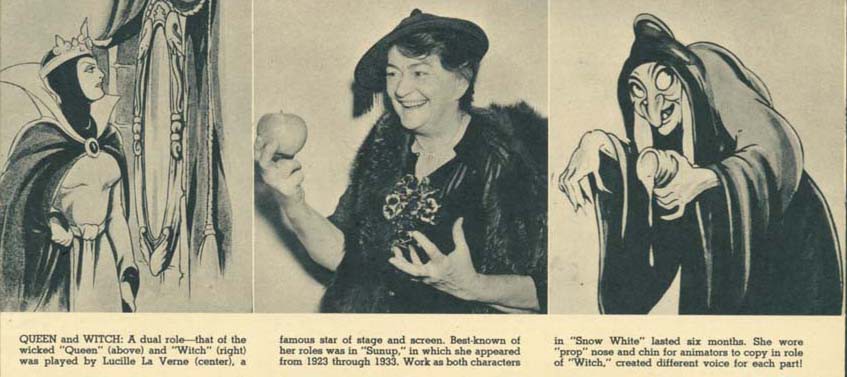 Lucille LaVerne has fun posing as the witch (Source: reproduction)
Lucille LaVerne has fun posing as the witch (Source: reproduction)
Walt Disney?s mother
No, Walt Disney?s mother was not the inspiration for Snow White nor, luckily, for the Evil Queen. But the story of her life ? or rather, the end of her life ? is closely tied to the success of ?Snow White and the Seven Dwarfs?.
With the huge profit the film made, Walt Disney bought a beautiful new house for his parents. The house, however, had a furnace malfunction that was not correctly repaired and, one month after moving to the new house and less than one year after the opening of ?Snow White and the Seven Dwarfs?, Flora Disney died from asphyxiation by leaking gas.
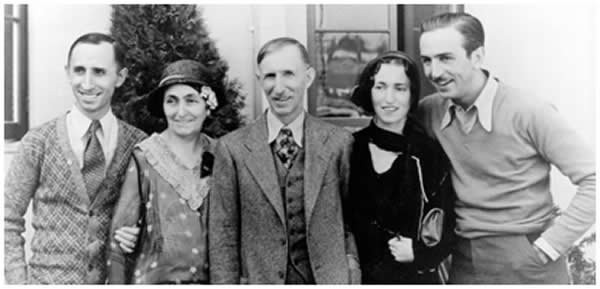 Flora Disney is the second from the left. Walt Disney is in the far right, and next to him stands his only sister, Ruth (Source: reproduction)
Flora Disney is the second from the left. Walt Disney is in the far right, and next to him stands his only sister, Ruth (Source: reproduction)
Walt Disney felt he was personally responsible for his mother?s death, and the episode affected him in many ways: not only personally, but professionally ? from then on he chose to make almost all of the leading characters from his films motherless.
